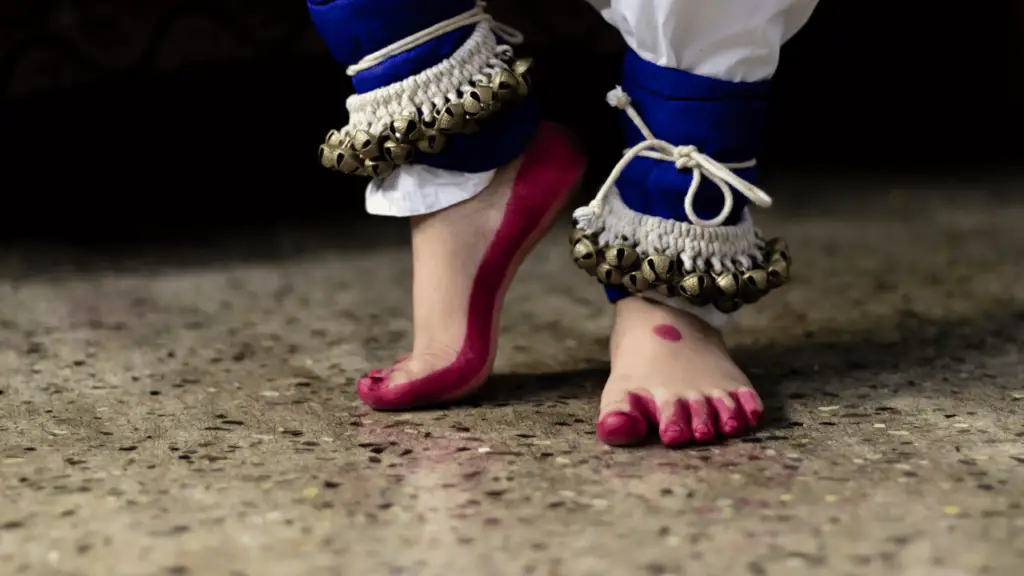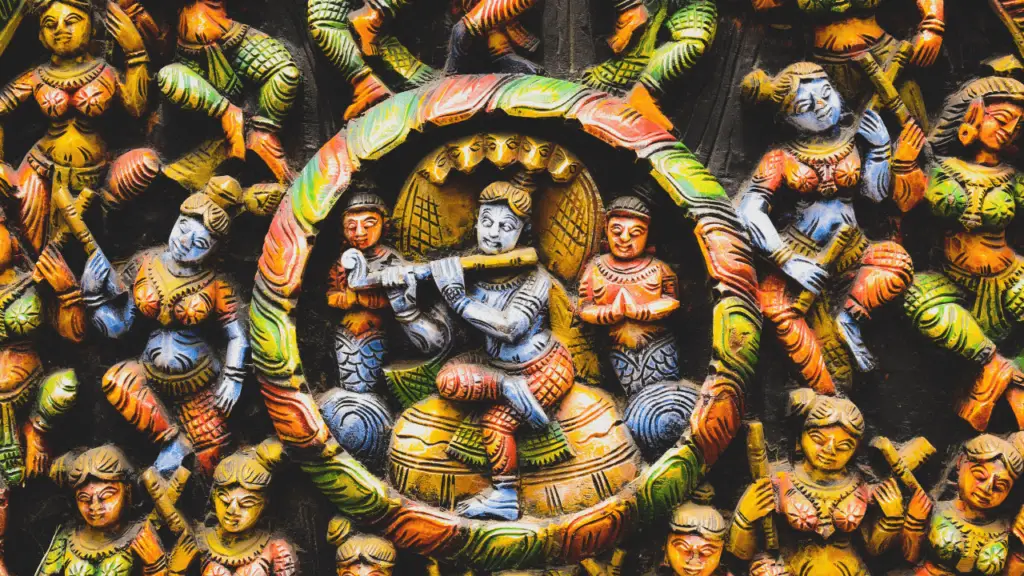India is a place with a wide range of cultures and boasts a rich history that has been spanning many thousands of years. The country’s artistic and cultural heritage includes a broad range of cultures, including classical dance as well as music, architecture and sculpture. This article will explore the Cultural and Artistic Heritage and shed the light on its importance and highlighting the amazing art forms that formed the identity of the country.
India’s Rich Cultural Heritage
The rich cultural heritage of India is a blend of many influences that reflect the long-running tradition of blending cultures and vibrant artistic traditions. From the old Indus Valley Civilization, to the vibrant and diverse tapestry of contemporary India the cultural heritage of India continues to be awe-inspiring and captivating all over the world.
The artistic and cultural heritage of India is of immense importance as it is a connection back to the past linking current generations back to their roots and giving them a sense identification and belonging. It’s a testimony of India’s rich history with deep-rooted traditions as well as amazing artistic talents.
Classical Dance Forms

India is known for its stunning classical dance styles, each originated from different regions of the country, and are infused with unique cultural stories and aesthetics. The dance forms show the perfect mix of elegance, storytelling and a thumping footwork. Let’s take a look at the most popular classical dance forms from India:
Bharatanatyam
Bharatanatyam originated from Tamil Nadu in South India is among the oldest dance forms that are popular in the nation. It is distinguished by complex movements, expressive gestures as well as elaborate costumes. The dance form primarily depicts stories that are derived from Hindu mythology, and can evoke an array of emotions with its precise movements as well as facial expressions.
Kathak
The northwestern areas in India, Kathak is a stunning dance form that combines elements from Hindu and Muslim traditions. It is renowned for its intricate footwork, fast spinning, and acoustic dance patterns Kathak attracts the attention of audiences through its smooth movements and elegant expressions. It has developed over the years with the influences of the both Indian and Persian styles.
Odissi
The state that it is based in originates from Odisha in the eastern part of India, Odissi is a traditional dance form that celebrates the mythical romantic tales of love between Lord Krishna and Radha. It is distinguished by fluid moves, intricate hand gestures, as well as using facial expressions to express diverse emotions. Odissi is renowned for its poetic grace and delicate postures that transport viewers to a world of magical awe.
Kathakali
The Southern states in Kerala, Kathakali is a highly stylized dance-drama which incorporates colorful costume, elaborate makeup and intricate facial expressions. It is influenced by old Sanskrit stories and ancient mythology illustrating stories of goddesses, gods, as well as epic heros. Kathakali is famous for its powerful mudras (hand gestures) as well as dramatic eye movements and vivid storytelling.
Music
Music has a central role in India’s artistic and cultural heritage. India has two major traditional music styles: Hindustani and Carnatic. Furthermore, India’s varied traditional folk music styles enhance the musical landscape of India.
Hindustani Classical Music
Hindustani classical music primarily performed throughout North India, is characterized by the harmonies of music as well as intricate beats. It includes a broad range of musical and vocal forms that include instruments like the tabla, sitar bansuri and sarod being the main focus. Hindustani classical music focuses on emotional performances and invokes a profound spirituality.
Carnatic Classical Music
It is a form of music that originates from South India, Carnatic classical music is renowned for its complex melodic structure that are accompanied by rhythmic patterns and ethereal renditions. The emphasis is on the voice. is supported by instruments, such as the mridangam and veena as well as the ghatam, and violin. Carnatic music is a symbol of passion and has a distinct rhythmic structure known as tala which adds depth and elegance for the songs.
Folk Music
Alongside classical music, India’s musical heritage is rich in vibrant traditional folk music. Every region has its own distinct styles of folk music, reflecting practices, traditions and the daily life of local communities. From the lively Bhangra from Punjab to the ethereal Baul the music from Bengal, Indian folk music highlights the essence of rural life and represents the diverse culture of the country.
Architecture

The rich architectural heritage of India is evidence of the country’s magnificent history and unparalleled workmanship. From caves and temples that date back to the ancient times to breathtaking mosques and palaces, the country’s architecture marvels show the innovation and imagination of the builders.
Ancient Temples and Caves
India is the home of many old caves and temples that have stood the years of adversity. They are adorned with intricate designs, imposing structures, and magnificent spires of temples like that of Kailasa Temple in Ellora, the Brihadeeswara Temple in Thanjavur along with the Sun Temple in Konark are testimony to the architectural excellence that was once. These sacred places do not only are places for worship, but they also serve as a repository of the past and culture.
Mughal Architecture
The Mughal Dynasty, renowned for its splendor and grandeur created a permanent mark on the architectural landscape of India. In the Taj Mahal, Taj Mahal, a UNESCO World Heritage Site is regarded as a magnificent representation of love and architecture. Other noteworthy instances of Mughal architecture are those of the Red Fort in Delhi and the Jama Masjid in Agra. Mughal Architecture seamlessly mixes Persian, Islamic, and Indian elements, creating stunning structures that continue to delight visitors.
Indo-Islamic Architecture
The amalgamation between Indo-Islamic styles of architecture is a further aspect of India’s rich culture. In the Qutub Minar in Delhi, with intricate calligraphy and geometric patterns, illustrates the Indo-Islamic style of architecture. Its Gol Gumbaz of Bijapur is the second-largest Dome in the world displays the amalgamation between Indian architectural styles and Islamic architecture. These architectural marvels demonstrate the harmonious interplay of various cultures and influences in India.
Sculpture
Indian sculpture is rich in tradition that spans many thousands of years. The sculptures in India exhibit exceptional artistic skill and craftsmanship, depicting gods, goddesses and mythological figures with meticulous details and awe.
Buddhist Sculptures
India was a key player in the spreading of Buddhism as well as Buddhist sculptures are of immense significance in terms of artistic and cultural. The caves that were cut from rock in Ajanta and Ellora are home to amazing Buddhist sculptures, which showcase the peacefulness and spirituality of the faith. The Bodhisattva statues are awe-inspiring, with their peaceful poses and graceful expressions, represent the artful mastery of Indian sculptures.
Hindu Sculptures
Hindu sculptures, which are found in temples and sacred places throughout India depict goddesses, gods and mythological stories. The temple sculptures such as Khajuraho which are dedicated to different gods, are known for their stunning beauty and sexiness. Hindu sculptures are adorned with exquisite features, expressive facial expressions and dynamic poses, which capture all the essentials of Hindu spirituality and mythology.
Jain Sculptures
Jainism is a religion of the past that focuses on non-violence and love is also leaving its impression upon Indian sculpture. The Jain temples of Mount Abu and Ranakpur are well-known for their intricate marble carvings portraying the Tirthankaras (spiritual leaders) as well as Jain Cosmology. The sculptures are a reflection of the Jain concept that emphasizes simplicity, austerity and spiritual freedom.
Preservation and Promotion
Recognizing the importance of India’s artistic and cultural heritage The government has launched numerous initiatives to protect and promote these heritages. Its Archaeological Survey of India (ASI) is a key player in the preservation and restoration of historical sites and monuments. In addition, the inclusion of a number of Indian locations to the UNESCO World Heritage list, including Hampi, the Taj Mahal, Hampi, and the Mahabodhi Temple, helps raise the awareness of the country’s heritage of culture.
There are efforts to increase tourism and cultural exchange and tourism, which will allow visitors from around the world to discover India’s rich history firsthand. Festivals and cultural occasions like Kumbh Mela and Surajkund Crafts Mela, Kumbh Mela and the Surajkund Crafts Mela are a way to showcase the diversity of India’s culture expressions, and also provide an opportunity for artists or performers who want to display their skills.
Conclusion
The artistic and cultural heritage of India is an example of India’s incredible heritage and its diversity. The dance forms of classical as well as music, architecture and sculpture that have developed over time reflect the incredible artistic talent and deeply-rooted tradition that are the norm for Indian people. The preservation and celebration of this cultural heritage is not just essential to preserve India’s uniqueness but also for building respect and understanding between people from all corners of the world. By celebrating and promoting India’s culture as well as artistic legacy, we will ensure that the next generation will be able to enjoy the rich history of this captivating country.
FAQs
Q What is the most ancient dance form that is found in India? A: Bharatanatyam is considered to be one of the most classical dancing styles in India and has its roots going back thousands of years ago.
Q What state is well-known to be famous for Kathakali? A: Kathakali is a dance form that originated from the state of Kerala in the south. Kerala within India.
Q What are the most important instruments that are used for Indian traditional music? A: Indian classical music is played with a broad variety of instruments, such as tabla, sitar mridangam, veena, sarod and bansuri among many others.
Q What is the difference between Indian traditional music as well as Western classical music alike? A: Indian classical music and Western classical music are different in regards to structure, melody patterns, and structures. They are different, but they share rich in musical tradition.
Q What can I do to experience the Indian culture in person? A: To get a firsthand experience of India’s rich culture it is possible to visit historical sites, listen to ballet and classical music shows, visit museums and art galleries as well as take part in celebrations and events. Indulge yourself in the colorful Indian culture and let them be awe-inspiring to your senses.

[…] revival of history is important for understanding the development of American society: Exploring notable revivals in American history allows us to gain insights into the cultural, social, and political factors that have shaped the […]